15 Things That Remained the Same in the Past 100 Years
 Sometimes people get too focused on the future. All of the latest innovations
and gadgets are a nice addition to everyday life, but most will undoubtedly fade
into obscurity. After a few years, you may not even remember those once prized
possessions. This is the norm for most of life's utilities and conveniences.
Really, there is nothing wrong with this system. It promotes growth and fosters
a better quality of life. Sometimes people get too focused on the future. All of the latest innovations
and gadgets are a nice addition to everyday life, but most will undoubtedly fade
into obscurity. After a few years, you may not even remember those once prized
possessions. This is the norm for most of life's utilities and conveniences.
Really, there is nothing wrong with this system. It promotes growth and fosters
a better quality of life.
However, certain things just refuse to change. These objects and creations
withstand the test of time and prove that their inventors were outstanding in
both their design and implementation. Over the past 100 years, these occurrences
are both notable and impressive. Without much thought, you may walk past these
timeless treasures and marvels and not even spare a second glance. Taking a
moment to review some of the things on this list could shock you, and alter how
you view the world around you.
15) Trains
Trains are a huge part of life across the world. These machines
were designed for the transportation of large numbers of people from one
location to another. Soon, the ability to carry goods and raw materials was also
implemented into the design. While airplanes and automobiles have superseded
trains in regard to everyday transportation, the railway system still serves a
vital purpose. Considering the bulk of cumbersome materials like ore and rock,
only trains are adequately prepared to carry these items across large distances,
making them extremely useful in the manufacturing and production process chains.
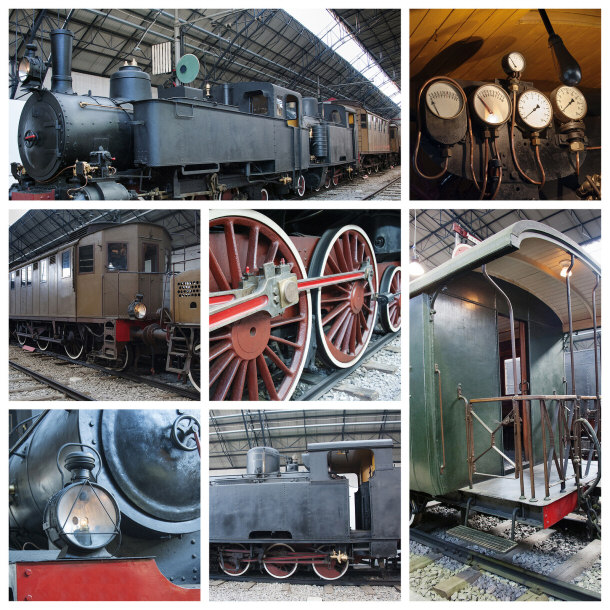
So what exactly is so great about trains that has allowed them to transcend
other inventions of their era? Well to start, the steam engine produced power that
was unmatched in the 19th century. Today, coal burning engines have gone the way
of the dinosaur. Cleaner, more efficient diesel engines have taken the mantle as
the best source of power for trains. Like engines, the steel rail system also
remains relatively untouched. Over the last 100 years, the basic design for
train rails and cargo carts has proven to be rather impressive. Until something
better comes along, you will be hard pressed to find a way to switch up the
engine and track system that has made trains so useful.
14) Guns
When discussing gun changes over the past 100 years, you'll find that the
conversation is a little lacking in content. Sure, rates of fire and sighting
mechanisms have increased the power and efficiency of firearms significantly,
but the firing action and mechanics of a gun remain relatively unchanged. If time travel were possible, soldiers from past eras would
probably have no trouble working a standard rifle or revolver, although figuring
out how the internet and cell phones work might make their heads spin.
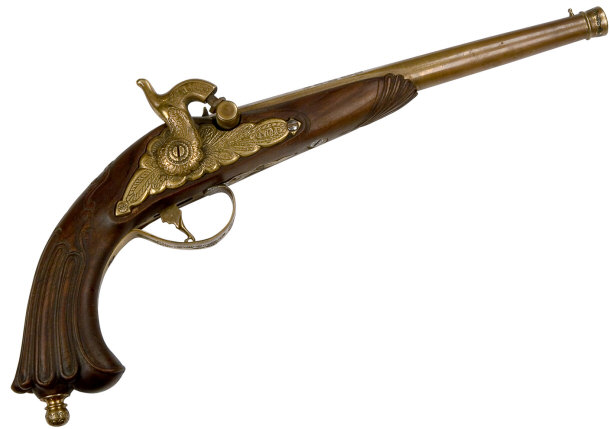
As far as the mechanics of a gun go, the system boils down to a few key
components. A firing pin ignites the cartridge or bullet by making contact,
leading to a deadly discharge from a barrel. The process is simple, efficient,
and holds little room for change or deviation. Some designs, like the
bolt-action rifle, have never been updated. Gun collectors today enjoy these
fine pieces of craftsmanship, noting that the years have done little to disturb
the capability of the gun to fire effectively. The next time you are at the
shooting range or hunting, take a second to look over your favorite gun and
appreciate the timeless mechanics that have allowed this weapon to remain
relevant and useful.
13) Bow and Arrow
Speaking of weapons, one of the first ranged methods of inflicting damage
also deserves a spot on this list. By some suggestions, the bow and arrow
pairing dates back to 30,000 BC. However, finding the true origins of this
weapon is almost impossible, due primarily to the early dates, which predate
recorded history, and the variety of cultures associated with its use. What
should be noted is the fact that it hasn't changed much since these exceedingly
ancient days.
The basic structure of a bow and arrow is very simple. A flexible piece of
wood, shaped into a bow, along with a string or piece of sinew compose the main
portion of the weapon. Once this section has been completed, an arrow can be
made to fit the finished bow. Generally, the arrow is a simple shaft of wood. At
one end is a sharp attachment, traditionally made of stone or glass. At the
other end is fletching that is composed of feathers or another stabilizing
element. This rear addition increases flight time and accuracy.
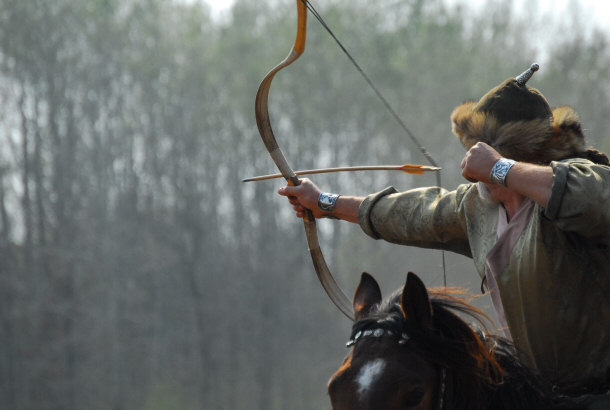
Several modern variations put a different spin on this deadly pairing.
Recurve and metal bows provide additional power and control to the archer.
Sighting elements, which attach to the body of the bow, improve accuracy. New
arrows also get into the mix by incorporating lightweight metal bodies and more
effective arrowheads. While all of these additions are nice, the basic function
of using tension to launch a projectile remains unchanged and unfazed by the
advances of time.
12) Bicycles
Who doesn't enjoy a nice bike ride at the beach on a warm summer afternoon?
The bicycle has long been a favorite for recreational users and competitive
riders alike. Although certain competing models arose in the early 1800s, the
modern style of bike is often attributed to Pierre Marchaux. His creation, the
"vélocipède," serves as the basis for a timeless tradition that users both enjoy
as a hobby and rely upon as a means of transportation.

The basic blueprint for a bike is simple. Two wheels, with rubberized tires,
attach to a lightweight frame by way of locking nuts. This frame then provides
the platform for a chain which connects the wheels to one another. From here,
handles, a seat, and pedals round out the construction. Of course, a smart rider
will also add in a helmet, but that is not necessarily essential. This
traditional outline has served many riders well over the past two centuries.
If you are looking for something past the basic design, the modern bike has
several options that increase the power and comfort of the ride, but don't
change the core components. Gearing options help adjust the bike's pedal speed,
making hills and other obstacles much less imposing. Varying tires still fulfill
the basic functionality, but serve different purposes based on your current
landscape. Even seating can be adjusted to provide more support for different
body styles. However, none of these changes alter the original purpose and
abilities that Marchaux had in mind when he drew up the first bicycle design.
11) Refrigerators
 This one might come as a bit of a surprise to you when reading this list.
Oddly enough, the basic concept of a refrigerator has really not changed that
much since its inception. At its core, the entire process adheres to natural
laws that are incontrovertible. Based on the physics of gases and their
properties, many ingenious individuals were able to come up with similar
compression systems in the 19th century. By forcing this gas into small spaces,
then releasing the substance into an open space, cold air is created by the
removal of energy in the surrounding areas to facilitate the expansion. Antique
and modern refrigerators may have significantly different power sources, but
both still engender use the same process to achieve the same result. This one might come as a bit of a surprise to you when reading this list.
Oddly enough, the basic concept of a refrigerator has really not changed that
much since its inception. At its core, the entire process adheres to natural
laws that are incontrovertible. Based on the physics of gases and their
properties, many ingenious individuals were able to come up with similar
compression systems in the 19th century. By forcing this gas into small spaces,
then releasing the substance into an open space, cold air is created by the
removal of energy in the surrounding areas to facilitate the expansion. Antique
and modern refrigerators may have significantly different power sources, but
both still engender use the same process to achieve the same result.
A basic refrigerator is simply a closed unit that retains the cold air that
is created from the compression process described above. Modern variants are
decidedly safer than their older counterparts. This safety first comes in the
form of the refrigerant or gas used by the appliance. Prior to the 1920s, most
refrigerators used sulfur dioxide, ammonia, and methyl chloride. These toxic
gases could leak from the machine, allowing for unfortunate deaths and other
major health issues. During that decade, the major manufacturers of these
household units combined their resources to find a safer alternative to those
poisonous refrigerants. From this effort, Freon was created. While this
refrigerant is not perfect, it is still much safer and far less toxic than its
predecessors.
The modern refrigerator has also switched out the latch and hook system,
opting instead for a magnetic seal that keeps doors closed and cold air in the
unit. Additionally, freezer compartments have been added to some units. However,
this auxiliary component does not detract from the core functionality of the
refrigerator – it merely adds more utility for those who do not wish to purchase
a standalone refrigerator.
10) Electric Fan
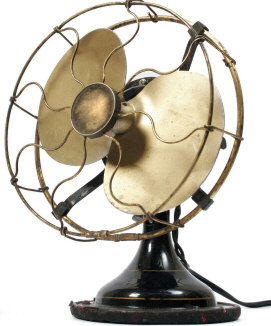 Another potentially odd addition to the list is the electric fan. However,
not all things that incorporate electricity have to be modern or recent in their
development. In fact, this type of fan traces its roots to the early days of
power services in the United States. Completing his work in 1882, Schluyler
Skaats Wheeler invented the first working electric fan. This appliance had two
blades that rotated swiftly to produce a breeze. For a hot day, few things are
more effective at helping you cool off. Another potentially odd addition to the list is the electric fan. However,
not all things that incorporate electricity have to be modern or recent in their
development. In fact, this type of fan traces its roots to the early days of
power services in the United States. Completing his work in 1882, Schluyler
Skaats Wheeler invented the first working electric fan. This appliance had two
blades that rotated swiftly to produce a breeze. For a hot day, few things are
more effective at helping you cool off.
From this design, few modifications have been necessary. An oscillating base
and additional blades have made the fan more enjoyable, but not altered the
functionality in any noticeable way. Likewise, safety implementations, like
finger guards, keep users from hurting themselves without changing the
characteristics of the fan mechanics. Such a design has easily withstood the
test of time and continues to play a major role in the lives of people around
the globe.
9) Eyeglasses
Getting new frames for your glasses can be a stylish addition to your
wardrobe. Likewise, you may need a stronger prescription as you grow older.
However, both of the processes are simply part of the traditional usage of
eyeglasses. Initially created in 1284, by Salvino D'Armate, eyeglasses have come
a long way in regards to fashion, but not necessarily in functionality. The
basic pair of glasses fulfills one mission – to help you see better. Of course,
how your glasses help you depends a great deal on your specific type of visual
ailment.
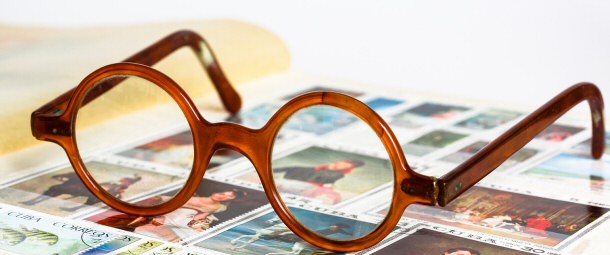
Outside of the basic frame, lenses of glass are tailored to correct certain
conditions. Nearsightedness, farsightedness, and astigmatisms, among others, are
all addressed by optometrists and lens manufacturers. What has changed in the
making of these corrective devices is the process by which parts are created.
Modern glasses are manufactured en masse and made of plastics, metals, and
glass. Ancient creations were constructed exclusively of glass and metals that
took time, dedication, and a deft hand to work. Regardless of the method,
countless individuals rely on these optical tools and are assuredly indebted to
those who helped create such an effective design.
8) Barbed Wire
Barbed wire fences are a staple of any modern farm. They keep animals in and
predators out, allowing for increased revenue by way of reduced losses.
Additionally, this type of fencing has unfortunately served darker purposes in
times of war and strife. Many battlefields and prisons have used this typing of
fencing to create impassable lines and defensive fortifications. In modern
times, barbed wire still fulfills these purposes. However, the basic concept of
sharp barbs as a means of protection, control, and security remains the same.
Little need for change across the years has been necessary in the design of
barbed wire.

With low production costs and great marketability to American farmers, Joseph
Gidden earned himself a substantial fortune by creating modern barbed wire. With
his design in 1873, he founded a company that was able to churn out the wiring
and fencing efficiently and swiftly. Today, the basic metal barbs atop strands
of more flexible metal wiring is still as effective as it was in the later
portion of the 19th century.
7) Books
Your first reaction may be to dispute the claim that books have not changed
in the past hundred years. However, it is hard to lump electronic devices, like
eReaders and tablets, into the same category as the traditional paperback or
hardcover volume. First, these gadgets can run out of battery power, rendering
them effectively useless. A book will never run out of a charge. Also, a
paperback book can be lent and given from person to person. Most eBooks have
stringent restrictions that prevent such actions.

So, once removing potential electronic alternatives from the equation, books
really haven't changed in any significant way. With the first printing press,
the Gutenberg press, arriving in 1440, the world's approach to reading was never
the same. Stretching into modern times, copies of original manuscripts are
republished, via a printing system, onto paper and bound together. The
continuity of this process is what ties all books together, thereby cementing
the fact that little has change with these treasured items over the course of
time.
6) Sailboats
Naval exploration and transportation have both been major factors in the
advancement of human civilization. Both modern and ancient mariners have plied
the waters, carrying vital goods and looking for new lands. Over these thousands
of years, boats have undergone a vast number of changes. However, one variation
stands above the rest as being resistant to change and effective in its design –
the sailboat.
Sailboats trace their roots back to the first seafaring peoples. As a
contemporary of boats powered by rowers, sailboats focused on efficiency over
brute strength. By harnessing the power of the winds, faster travel with less
work could be accomplished. Of course, other powered methods have left the
sailboat in their respective wakes. But in regards to non-powered marine
vessels, the sailboat still reigns supreme. This just proves that a basic
concept that gets the job done right is hard to beat.

The workings of a sailboat rely on having a large sheet of fabric, often made
of canvas and referred to as the "sail," catch winds and gusts. From these
bursts of air, the boat is propelled forward, allowing the captain to control
the direction via the rudder and orientation of the sail. Even these basic
steering mechanisms still provide an effective and easily manageable means of
piloting the boat. When viewed in this manner, it is easy to see why sailboats
are still used by many people who enjoy taking to sea for recreation and
exploration.
5) Incandescent Light Bulb
Today, most people use several different light bulbs in their homes or places
of work. LED, halogen, and fluorescent lights all have their uses. However, they
are still working to usurp the position held by incandescent light bulbs. Dating
back to 1880, this lighting source spurred the growth of an entire industry.
Today, personal power and electricity is a given in much of the world. But
without the incandescent light bulb, this may not have been the case.

As one of Thomas Edison's finest inventions, this type of light bulb
revolutionized the lives of his contemporaries. From this creation, Edison would
go on to pioneer the development of the nationwide power grid and engage in many
financial and business ventures. As the focal point of his direct approach to
electricity, the incandescent light bulb served as a major factor in the
oncoming disputes between Edison and his rival, Nikola Tesla.
The basic structure of this light bulb remains virtually untouched. As power
courses through the bulb, a metal filament conducts the electricity and emits
light waves. While this is simple creation is still effective, it may not have
much of a future left in the modern world. Many government regulations are
looking to put the brakes on incandescent light bulbs. This is not caused by the
actual effectiveness of the light bulb, but rather environmental and energy
resource concerns.
4) Flushing Toilets
 Be it public or private restrooms, some things about going to the bathroom
never change. When you need to go, you have to find a toilet fast. Thankfully,
modern people still aren't trying to figure out how to get this essential device
right. With the work of Thomas Crapper in the late 19th century, the flushing
toilet is about as good as it gets. Changes to this household item have not been
necessary, due to an amazingly effective design and excellent integration with
civic plumbing systems. Be it public or private restrooms, some things about going to the bathroom
never change. When you need to go, you have to find a toilet fast. Thankfully,
modern people still aren't trying to figure out how to get this essential device
right. With the work of Thomas Crapper in the late 19th century, the flushing
toilet is about as good as it gets. Changes to this household item have not been
necessary, due to an amazingly effective design and excellent integration with
civic plumbing systems.
Although the components of portions of the toilet have changed, the basic
premise remains the same. When you are finished with your business, a handle
initiates the process, which removes the contents of the bowl via a transfer of
water and pressure. Today, the metal interior portions of the toilet have been
replaced with less costly plastic parts. However, this has not adjusted the core
concepts that surround the toilet. It is still as useful and trustworthy as it
has always been.
3) Cars
Can you imagine a world without cars? Neither can most people. Of course, it
seems like cars have always been a necessity that you can't live without. The
reality is that people managed just fine before automobiles. However, just
getting by and excelling are two different things – and cars definitely excel at
what they do. For personal transportation, nothing has even come close to making
a dent in how effective and efficient cars have been for people over the past
century or so.
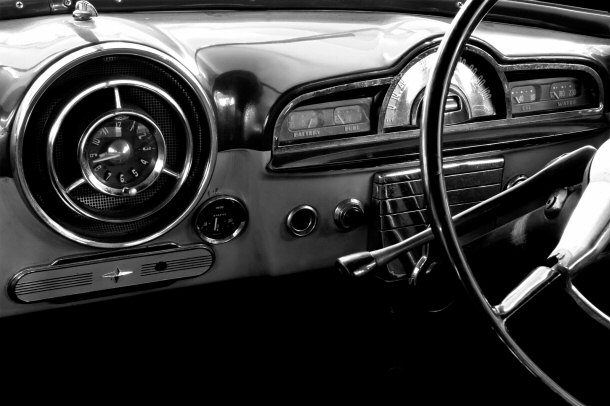
The reason cars work so well is simple. The traditional design which includes
a power source, a body, four wheels, and seating is incredibly simple. When a
simple answer covers a tough problem, in this case how to design a vehicle, you
know you are doing something right. Naturally, the mechanics that go into
engineering and manufacturing engines, frames, and rubber tires are exceedingly
complex. But the concept that binds them has worked nearly flawlessly for a
significant time period.
Producers, as well as aesthetic and performance variables, have changed over
the existence of the car. But there has yet to a system that supersedes the
standard design of an automobile. So while you may drive one type of car and
your friend drives another, consider how closely related both are to the
original variations of the four-wheeled car. Even more thought provoking is
trying to figure out a way to make a basic concept that is even better.
2) Landline Telephones
When you take mobile phones and Voice-over-Internet-Protocol (VoIP) out of
the mix, the phone system you know and love really hasn't changed much. These
staples of modern infrastructure hearken back to a day when text, picture, and
video messaging hadn't even been imagined. A look at the each phase of the
process illuminates just how impressive and relevant landline telephones really
have been over the past 100 years. Unlike other communication fads, people still
rely on the basic phone to get the job done.
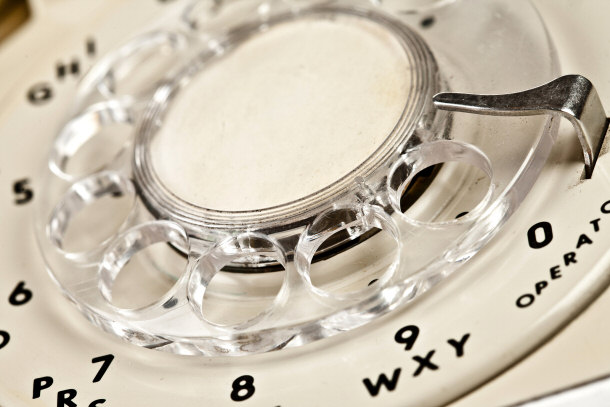
To begin, lines were either buried or strung along wooden poles across the
country. Nothing about this has changed in the modern setting. From here, calls
are made via outlets within homes and routed by the various telecommunication
firms. Perhaps the most compelling part of this system? It is extremely
reliable. This assurance of quality and service has kept landline telephones in
homes across the world. The next time your cell phone is out of juice and you
need to get in touch with someone, think about how useful and lasting the
original phone system is to modern living.
1) Musical Instruments
Music is the cornerstone of many social and cultural movements. From the
minstrels of the Middle Ages, to Led Zeppelin playing Madison Square Garden,
tons of things have surely changed in regard to instrumentation. While most
people assume this, they couldn't be more wrong. The reality is that many
instruments have worked off of the same design for not just the last hundreds of
years, but several hundreds or even thousands of years.
In regards to stringed instruments, like the guitar and the lute, the same
basic constructs produce the same sounds, both then and now. Although electric
versions have become increasingly popular, the fundamentals of striking
different combinations of strings to produce varying sounds are universal.
Acoustic instrumentation adheres to this principle even more by keeping the
method of auditory generation, the hollow base, exactly the same.
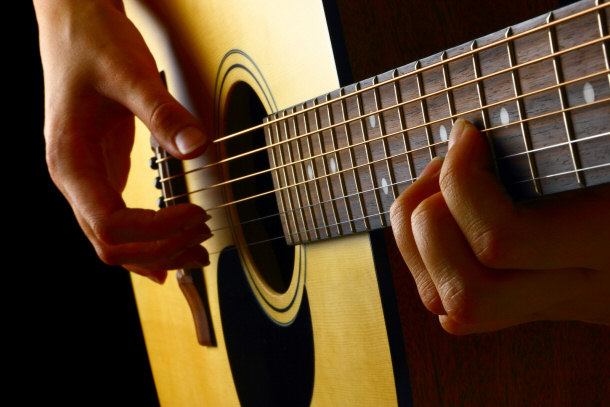
Unlike their stringed cousins, who have dabbled with electric components,
percussion and brass instruments have stuck to the original design with fierce
loyalty. These offerings focus on bold and unique sounds, based entirely on
craftsmanship. This has led to a dearth of changes for items like the saxophone
and the snare drum. For these instruments, the old saying, "don't fix what isn't
broke," definitely holds true.
Final Thoughts
Time has a funny way of making many things irrelevant. From wonder gadgets to
cutting edge technology, many things soon fall to the wayside with the advances
of new features and functionality. However, the last 100 years has seen several
creations that shatter this mold and endure as essentials of modern life.
Certain items, like eyeglasses and musical instruments, actually have been
useful for several centuries. Others, like the bow and arrow, have lasted
thousands of years. When using these items for recreation or professional use,
stop and consider just how amazing these things truly must be to last for so
long.
History
Top Lists:
15 Biggest Architectural Blunders
Top 15 Most Horrifying Terrorist Attacks
15 Fascinating Facts About the Vietnam War
Top 15 Amazing Ancient Egyptian Architecture
20 Little Known Facts About the Titanic
Top 10 Most Creepiest Abandoned Places in the World
26 Interesting Facts About Henry Ford
List of 15 Tough Ancient Warriors Through History
List of 15 Notorious Roman Emperors and Empresses
Top 15 Worst Pandemics in History
15 Things That Remained the Same in the Past 100 Years
Top 15 Things China Invented First
Top 15 Greatest Inventors in History
15 Interesting Facts About Abraham Lincoln
10 Inventors Who Stole Their Ideas
15 Stories of Hilarious Medieval Victories
15 Detectives Credited With Solving The Biggest Cases In History
15 Fascinating Facts About the Ancient Pyramids
15 Inventions That Were the Result of a Mistake
15 Famous Stories of Execution
16 Rare Facts About the U.S. Presidency
15 Astonishing Leadership Stories that Ended up Successfully
Informational:
Analysis of the Linear B tablets and Wall Paintings
Aristophanes and Classical Greek Comedy
The First War of Scottish Independence
|